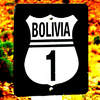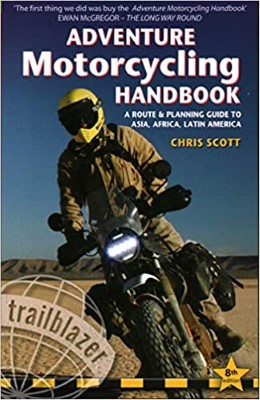 1Likes 1Likes
 |
|

2 Feb 2014
|
|
Registered Users
HUBB regular
|
|
Join Date: Jul 2012
Location: Kongsberg, Norway
Posts: 45
|
|
|
Seasons-How to avoid extreme heat and cold ?
Plan to spend 3 months traveling in South America, mainly Chile, Argentina, Peru and Bolivia.
But I don't take heat very well, anything above 30degC (86F) and I struggle. Don't mind it being cool (from Norway after all) but am aware that the Andes are high altitude so have to try to avoid snow as well.
So not sure how easy it is to make a general route where temps are mainly between 10 and 30C (50-86F). But thought maybe take advantage of the seasons, something like:
Start in South of Chile/Argentina in January/February
End up in Peru/Chile in April/May
OR
Start in Peru/Chile in August/September
End up in South of Chile/Argentina in November/December
Then I'm in South when it's summer and warm-ish and north when winter. I do of course realize there will be hotter/colder days than I prefer but just trying to plan as smart as I can.
What about rain seasons...if there are any?
|

2 Feb 2014
|
|
Registered Users
Veteran HUBBer
|
|
Join Date: Nov 2013
Posts: 679
|
|
Speaking from purely my own net-based research, it always rains in Patagonia but does so less in the summer months of Nov-February. You won't need to worry much about high temperatures in the Andes but rains can be a problem. Personally, I think cold weather is easier to cope with than torrential rain, not least when it comes to motorcycle touring. In the Andes, and maybe someone will hopefully correct me if I'm wrong, but you either go in the summer and get soaked or go in the winter and deal with -minus night-time temperatures. My plan is to hit Northern Chile Peru/Bolivar in August, September, October and then head down the eastern side of the Andes in November, taking my time to reach Patagonia by December, and then make my way back up through the south of Chile for January 
|

3 Feb 2014
|
|
Registered Users
Veteran HUBBer
|
|
Join Date: Dec 2008
Location: California
Posts: 142
|
|
|
When I rode through Argentina at he end of December around Mendoza it was 104 Degrees F.
|

3 Feb 2014
|
 |
Contributing Member
Veteran HUBBer
|
|
Join Date: Jun 2006
Location: St Helens
Posts: 763
|
|
|
I've done the Andes twice now and it can be hot :-)
Findingthe right time is hard, but using the right gear can help. If you are prepared to use a light summer jacket and kevlar lined jeans then they are suitable for the heat.
On our 1st trip I had my Hein Gerrick jacket and trousers in an Ortleib bag on my back seat so that I could switch as soon as conditions change. On our 2nd trip as we were both on one bike I kept the HG gear (jacket) on most of the time and sweated in Argentina (NW corner).
Jean used decent thin waterproofs (until she burnt them on the exhaust) on the 2nd trip.
We have ridden Bolivia in December and Feb, both time it was mainly dry. In the December my HG gear kept me warm and we only experienced the one heavy down pour (El ALto, in the traffic). December is just at the start of the wet season. But if you drop to Cochabamba it will be dry.
In the Feb in Bolivia again we must have got lucky, 9 days without getting rained on. never seen snow.
To stay cool head through Chile, use Ruta 5 and take the coast road between Iquique and Antofogasta if the desert bores you.
You can either cross to Argentina north or south of Santiago. Mendoza is probably always warm :-)
Ptagonia, does not *always* rain :-). Again, we may have been lucky and only needed waterproofs a few times.
YMMV, but isn't that always the fun ? :-)
Oh, Patagonia fills up with Chileans at the end of Jan, best end of Dec into Jan.
|

4 Feb 2014
|
|
Registered Users
Veteran HUBBer
|
|
Join Date: Nov 2013
Posts: 679
|
|
|
Thanks for that Bruce.
Any ideas what to expect in Bolivian/Chilean Atacama, Bolivar highlands and Peruvian Andes in August, September & October? I'm hoping not too cold but no rain either... Is going up there at this time going to be crazy or just a bit chilly?
|

4 Feb 2014
|
|
Registered Users
Veteran HUBBer
|
|
Join Date: Apr 2009
Location: No fixed abode
Posts: 113
|
|
|
re seasons down south
Not wanting to push your question aside Ridetheworld (though El Forko tells me those are fine months to be in those parts - May+ Bolivia, Aug-Oct Peru) . . .
But a related question:
I’m currently in Puerto Natales and would like to take my time weaving north over the Andes. I’m wondering when the weather turns (i.e. when roads get dicey with encroaching winter and passes close for the season). I don’t want to cut it that fine, but good to know. I realise the snow comes and goes higher up with rains in the valleys, but its the season end I'm interested in.
I imagine being up around Bariloche by end Feb/early March will be sensible, beyond which the temps are hot, though hopefully coming down from peak temps of Jan-Feb, especially up in northern Chile and NW Arg.
Then Bolivia for May+.
Cheers!
Bob
|

4 Feb 2014
|
 |
Contributing Member
Veteran HUBBer
|
|
Join Date: Jun 2006
Location: St Helens
Posts: 763
|
|
Quote:
Originally Posted by ridetheworld

Thanks for that Bruce.
Any ideas what to expect in Bolivian/Chilean Atacama, Bolivar highlands and Peruvian Andes in August, September & October? I'm hoping not too cold but no rain either... Is going up there at this time going to be crazy or just a bit chilly?
|
I've not done August in Bolivia, but that is the dry season. And also "high" tourist season. Bolivia has highland and lowland regions, so temps can vary and even in the dry season in can get chilly at night around Oruro and down in Uyuni.
The Atacama is almost guaranteed dry :-). But it is a desert and can also get cold at night. There is no time that is crazy t go IMO. Just what fits with your itinerary. As long as you have decent riding gear the extremes are manageable. If space, carry summer gear (light jacket and kevlar Jeans) and mix and match
|

4 Feb 2014
|
 |
R.I.P.
Veteran HUBBer
|
|
Join Date: Aug 2003
Location: california
Posts: 3,822
|
|
Quote:
Originally Posted by pingvin

Plan to spend 3 months traveling in South America, mainly Chile, Argentina, Peru and Bolivia.
But I don't take heat very well, anything above 30degC (86F) and I struggle. Don't mind it being cool (from Norway after all) but am aware that the Andes are high altitude so have to try to avoid snow as well.
So not sure how easy it is to make a general route where temps are mainly between 10 and 30C (50-86F). But thought maybe take advantage of the seasons, something like:
Start in South of Chile/Argentina in January/February
End up in Peru/Chile in April/May
OR
Start in Peru/Chile in August/September
End up in South of Chile/Argentina in November/December
Then I'm in South when it's summer and warm-ish and north when winter. I do of course realize there will be hotter/colder days than I prefer but just trying to plan as smart as I can.
What about rain seasons...if there are any?
|
Either of your plans will work. Both good.
For Southern regions of Chile and Argentina, November to March generally have the best weather ... but it can still rain and wind can blow like a Banshee! 
During this same time period ... going a bit North and into central or East coast of Argentina, you can run into extreme HEAT. Buenos Aires can be 35C or higher. Go further North and it gets even hotter. Once North of Mendoza it can be over 40C. (around Salta)
Coastal Chile and the Andes are cooler, even in Summer (November to March).
By March temps can begin to cool and Patagonia and Tierra del Fuego may become too cool to ride. But further North it should cool off, with luck you'll find pleasant weather.
With Climate Change (Global Warming) it's now impossible to predict how your year will go. It's now really variable .... and crazy. 
We're seeing unprecedented record breaking HEAT, COLD, RAIN, SNOW.
So we can't 100% count on anything. "Seasons" are no longer as predictable as they once were. With any luck you'll have predictable weather and have a good ride.
But as others have said, having good versatile gear is important. I would never wear Cotton jeans of any kind, Kevlar is hype. They are HOT and sweaty when it's hot and cold and wet in bad weather.
I'd much rather have vented/mesh dirt bike riding pants (like KLIM Baja or Mojave pants) for hot weather ... and use rain over-pants for cold/wet. Same with your jacket.
Quality mesh or partial mesh jacket with quality armor. Use a light rain jacket and under layers if it's cold or wet. If hot, strip it all off and ride in the mesh dirt bike riding gear. It's wonderful in the heat! If it's over 86F ... that is the best set up, IMHO.
I've ridden in S. America and been to Ushuaia five times over 3 years. But it's been years since I was there. But I do ride in our California Sierra Nevada mountains year round. I am quite familiar with going from 4000 meter snow covered mountain passes down to below Sea Level to Death Valley with temps over 45C. I've done this for over 20 years. The above gear is seems to provide the most versatility.
I spent 6 months in Peru' and Bolivia in my travels and found weather hard to predict in the high Andes. Seems like rain can happen anytime. When the Sun comes out it is INTENSE and will FRY you without you knowing. Temps may not get HOT ... but Take Care with Sun in high Andes. If the Andes are too cold you could go lower in Altitude and head down into the Amazonas regions ... like Equitos, Bolivia or Maldonado, Peru'. Muy tropical!
A few links for some decent travel gear:
Klim Baja Pants - RevZilla
 Summer Jackets - RevZilla
Men's Mesh Motorcycle Jackets - RevZilla
Summer Jackets - RevZilla
Men's Mesh Motorcycle Jackets - RevZilla
|

6 Feb 2014
|
|
Registered Users
Veteran HUBBer
|
|
Join Date: Nov 2013
Posts: 679
|
|
|
Great responses - flying out on Monday can't wait!!!
|

6 Feb 2014
|
 |
Contributing Member
Veteran HUBBer
|
|
Join Date: Jun 2006
Location: St Helens
Posts: 763
|
|
Quote:
Originally Posted by mollydog

But as others have said, having good versatile gear is important. I would never wear Cotton jeans of any kind, Kevlar is hype. They are HOT and sweaty when it's hot and cold and wet in bad weather.
|
We will just have to disagree with the Kevlar jeans :-) I have worn them from Canada to Patagonia and on a RTW. They are light, usable on and off the bike and I can put my waterproofs (HG pants) over them quickly. This adds a layer to warmth as well.
Oh, and they do their job protecting me when I throw my bike down then road :-) (Argentina and France ... :-()
|

6 Feb 2014
|
 |
R.I.P.
Veteran HUBBer
|
|
Join Date: Aug 2003
Location: california
Posts: 3,822
|
|
hey Bruce,
No worries ... glad you've had good experience with your jeans. Using rain pants over is smart ... I do the same over my dirt riding pants or leathers.
What brand Kevlar Jeans are you using?
If you look into so called "Kevlar Re-inforced" jeans you'll find that first off, they use a small amount of Kevlar strands, and only in the "Impact" areas. (hips, butt, knees)
This helps protect the fabric from burning through when sliding down pavement at 50 mph. But most serious injury happens on IMPACT.
But it would be nice to have that Kevlar protection if sliding down a gravel road. But I'd imagine the jeans would still get torn up?
For me good quality armor and pads are more important than Kevlar fabric. Ballistic Cordura fabric is pretty rugged ... but I rely more on armor I use underneath than the fabric itself. If armor is placed accurately it can prevent broken bones.
The other thing about Kevlar Jeans is that a very small percentage of actual Kevlar is typically used in the impact areas ... like 5% or 10%? So it's a bit of Kevlar thread woven into the Cotton fabric. Several moto magazines have looked closely at several brands of the Kevlar reinforced jeans.
Not all good reviews. 
"Draggin Jeans" are one of the most popular brands. But several other companies now make these jeans ... even Cycle Gear. 
In high heat and humidity with temps over 35C I find jeans are HOT and sweaty. They also get wet both from your own sweat and from a tropical shower. They do not dry out quickly. Crotch Rot and Monkey Butt seem to be a common complaint of jean wearers I've ridden with. Heavy jean denim fabric is relatively heavy compared to dirt riding pants.
Riding off road sometimes can be hard work, so we sweat a lot. Vented, mesh type gear tends to allow the sweat to evaporate fairly quickly. Jeans stay wet for hours. Monkey Butt?
But can't argue with your experience ... and it sounds positive!  When I lived in El Salvador and Guatemala (2 years) I gave up all my jeans, for casual wear (not riding), wore what locals wear: Wash & Wear wrinkle free syn blend pants. Thin, light, no wrinkles, easy wash (unlike Jeans) and dry super quick ... and less sweat!

|

7 Feb 2014
|
 |
Contributing Member
Veteran HUBBer
|
|
Join Date: Jun 2006
Location: St Helens
Posts: 763
|
|
Quote:
Originally Posted by mollydog

hey Bruce,
No worries ... glad you've had good experience with your jeans. Using rain pants over is smart ... I do the same over my dirt riding pants or leathers.
What brand Kevlar Jeans are you using?
If you look into so called "Kevlar Re-inforced" jeans you'll find that first off, they use a small amount of Kevlar strands, and only in the "Impact" areas. (hips, butt, knees)
This helps protect the fabric from burning through when sliding down pavement at 50 mph. But most serious injury happens on IMPACT.
But it would be nice to have that Kevlar protection if sliding down a gravel road. But I'd imagine the jeans would still get torn up?
For me good quality armor and pads are more important than Kevlar fabric. Ballistic Cordura fabric is pretty rugged ... but I rely more on armor I use underneath than the fabric itself. If armor is placed accurately it can prevent broken bones.
The other thing about Kevlar Jeans is that a very small percentage of actual Kevlar is typically used in the impact areas ... like 5% or 10%? So it's a bit of Kevlar thread woven into the Cotton fabric. Several moto magazines have looked closely at several brands of the Kevlar reinforced jeans.
Not all good reviews. 
"Draggin Jeans" are one of the most popular brands. But several other companies now make these jeans ... even Cycle Gear. 
In high heat and humidity with temps over 35C I find jeans are HOT and sweaty. They also get wet both from your own sweat and from a tropical shower. They do not dry out quickly. Crotch Rot and Monkey Butt seem to be a common complaint of jean wearers I've ridden with. Heavy jean denim fabric is relatively heavy compared to dirt riding pants.
Riding off road sometimes can be hard work, so we sweat a lot. Vented, mesh type gear tends to allow the sweat to evaporate fairly quickly. Jeans stay wet for hours. Monkey Butt?
But can't argue with your experience ... and it sounds positive!  When I lived in El Salvador and Guatemala (2 years) I gave up all my jeans, for casual wear (not riding), wore what locals wear: Wash & Wear wrinkle free syn blend pants. Thin, light, no wrinkles, easy wash (unlike Jeans) and dry super quick ... and less sweat!
 |
I started out with Hood Jeans, Motorcycle Jeans from Hood Jeans UK, then moved onto Kyrano, Motorcycle Jeans - Kyrano-UK, their sister company. Read a lot of info before settling on them. Tried Draggin on, and dig not like, also over priced.
I know what you mean about armour, but the new D30 is a great improvement. Some protection is better than none IMO. And as I have not broken anything yet...... :-).
As I say, I am a big fan of jeans and have not worn leathers for about 5 years now. As with bikes, it is each to his own choice :-)
|

9 Feb 2014
|
 |
Gold Member
Veteran HUBBer
|
|
Join Date: Feb 2008
Location: Maplewood NJ USA
Posts: 565
|
|
|
Bolivia Jan/Feb
In 2013 I rode from Potosi to La Paz three times, once in late January, then twice in February (mid and late.) Twice I encountered snow in the mountains north of Potosi and every time there were periods of hail. I go drenched in Potosi and the altitude made the ride from there to Sucre challenging. The distances between towns can be long and if the weather turns you might not find lodging right next to the highway (in fact chances are you won't), so be prepared to explore small towns that are within sight of the highway.
The PanAm really sucks for maybe 20 miles south of La Paz due to deep grooves/ruts caused by trucks.
Adventure is something that sounds charming when you are sitting on the couch by the fire. Living it can be hard, but its worth it.
__________________
Peter B
2008/09 - NJ to Costa Rica and back to NJ
2012/13 - NJ to Northern Argentina, Jamaica, Cuba and back to NJ
2023 - Peru, Brazil, Paraguay, Argentina, Chile, Bolivia...back to Peru.
Blogs: Peter's Ride
|

9 Feb 2014
|
 |
R.I.P.
Veteran HUBBer
|
|
Join Date: Aug 2003
Location: california
Posts: 3,822
|
|
Great comments Peter! No question your experience reflects just how nasty weather can get on the high Alti-Plano. Snow and super cold happen. 
I did not ride bikes in Bolivia, but remember the Bus ride from La Paz down to Coroico (Death Road). You start out in La Paz around 14,000 ft, then go UP and over a high pass before dropping down onto the Death Road. That pass had a blizzard going on ... I was amazed the bus made it. Would have been dicey on a bike. 
That super cold/rain/snow is another reason I gave up on cotton jeans over 20 years ago. If Cotton gets wet ... and you ride into freezing conditions ... you freeze! Ice next to skin is not good. With a Wool blend or synthetic you can still stay a bit warm even when wet and both dry out with air flow. Staying dry is key to staying warm.
I have most trouble with my hands and feet (because of exposure to frost bite). If your boots get wet inside and then you go UP to high altitude and freezing temps ... your feet will freeze, and that is really uncomfortable! (painful for me)
I treat my riding boots with Sno-Seal (US product) and use water proof over-booties. All this helps. With frozen hands and feet it's tough to maintain safe control! 
|

9 Feb 2014
|
 |
Gold Member
Veteran HUBBer
|
|
Join Date: Feb 2008
Location: Maplewood NJ USA
Posts: 565
|
|
|
Dry and warm
Summer in southern South America can be quite pleasant, not too hot. I doubt you'll have issues with being over heated. You are more likely to be cold if you go deep into the cone. I have heard reports of a dusting of snow during high summer in Ushuaia. Search for "annual weather in...", then figure it will be considerably colder in the mountains.
Here is a sample website:
Santiago, Chile Travel Weather Averages (Weatherbase)
Its not all about riding, you'll want warm stuff to wear in the mountain during the evening. Cold and me, we have a love/hate relationship. Mostly hate from my side. I failed to take enough warm layers for the evenings.
When it comes to fabric, wool has some very practical properties. I was told that when wool gets wet, the insulating benefits increase. A friend of mine wore a light wool pull over shirt throughout his ride in South America. I am a fan of wool socks, for several reasons.
- If they get wet your feet will stay warm (...riding all day in pouring rain your socks will get wet)
- You can wear wool for days and it won't stink.
- Wool socks dry faster than cotton (for DYI hotel sink washing.)
When it comes to shirts and underwear, I go for polyester. In hot climates these garments can be worn for several days because they dry quickly and bacteria doesn't get as much of a chance grow. On the downside, when polyester gets a sink, it is hard to get it out. I buy small bags of powder detergent and hand wash in hotel sinks, roll up and squeeze with a towel, then drape over the A/C vent or fan. By morning the collection is usually dry. Cotton just doesn't dry as quickly as wool or polyester. Finding a wash service is a nice idea, but sometimes they don't have a commercial drier. You can stuck with wet to damp clothes. This happened to me in Peru after dropping the bike making a water crossing. One of the panniers got flooded before I could pick the bike up (in record time I will add.) That night the best hotel in town didn't have drier, or the language barrier kicked, or they just didn't want to dry my clothes. Clothes were draped everywhere in my room that night, and mostly dry in the morning.
My riding gear (Olympia Moto Sports) has waterproof and insulated liners. I hate the cold, so I wear a heated vest at high altitude or if the temperature drops and its raining. My spirits improve dramatically when the heated vest kicks in. Did I mention how much I hate the cold?
I don't think you will run into a lot of rain given the time of year, but it happens and you have to be prepared. When it comes to keeping your fingers warm and dry, I have searched for summer weight gloves that are water proof. I can't find a pair that are affordable and the liners don't come out when pull my damp hands out...so, I wear big rubber gardening gloves (Home Depot, $5.00 USD) over Mechanix gloves ($19.00 USD) . Yes, I go a little light on hand protection. The rubber gardening glove keep my Mechanix glove dry, and my fingers stay warm. Nothing really works to keep your hands 100% dry in a full day of riding in the rain.
One of my favorite memories from Bolivia was crossing the mountains north of Potosi. About an inch of snow had fallen shortly before I reached the highest point in the mountains. A few cars had gone ahead of me, leaving a tires width of track to ride in. Twisting back and forth along the mountainside I spotted a sheep herder sitting on the slope. He was wrapped in some kind of blanket and had a blunt cone shaped hat. This guy was hunkered down watching his flock as the snow fell around him. Tough as nails.
__________________
Peter B
2008/09 - NJ to Costa Rica and back to NJ
2012/13 - NJ to Northern Argentina, Jamaica, Cuba and back to NJ
2023 - Peru, Brazil, Paraguay, Argentina, Chile, Bolivia...back to Peru.
Blogs: Peter's Ride
|
|
Currently Active Users Viewing This Thread: 1 (0 Registered Users and/or Members and 1 guests)
|
|
|
 Posting Rules
Posting Rules
|
You may not post new threads
You may not post replies
You may not post attachments
You may not edit your posts
HTML code is Off
|
|
|
 Similar Threads
Similar Threads
|
| Thread |
Thread Starter |
Forum |
Replies |
Last Post |
|
Heat or cold weather mainly?
|
maria41 |
Northern and Central Asia |
3 |
29 Jan 2014 03:47 |
|

Check the RAW segments; Grant, your HU host is on every month!
Episodes below to listen to while you, err, pretend to do something or other...

2020 Edition of Chris Scott's Adventure Motorcycling Handbook.
"Ultimate global guide for red-blooded bikers planning overseas exploration. Covers choice & preparation of best bike, shipping overseas, baggage design, riding techniques, travel health, visas, documentation, safety and useful addresses." Recommended. (Grant)

Ripcord Rescue Travel Insurance™ combines into a single integrated program the best evacuation and rescue with the premier travel insurance coverages designed for adventurers.
Led by special operations veterans, Stanford Medicine affiliated physicians, paramedics and other travel experts, Ripcord is perfect for adventure seekers, climbers, skiers, sports enthusiasts, hunters, international travelers, humanitarian efforts, expeditions and more.
Ripcord travel protection is now available for ALL nationalities, and travel is covered on motorcycles of all sizes!
What others say about HU...
"This site is the BIBLE for international bike travelers." Greg, Australia
"Thank you! The web site, The travels, The insight, The inspiration, Everything, just thanks." Colin, UK
"My friend and I are planning a trip from Singapore to England... We found (the HU) site invaluable as an aid to planning and have based a lot of our purchases (bikes, riding gear, etc.) on what we have learned from this site." Phil, Australia
"I for one always had an adventurous spirit, but you and Susan lit the fire for my trip and I'll be forever grateful for what you two do to inspire others to just do it." Brent, USA
"Your website is a mecca of valuable information and the (video) series is informative, entertaining, and inspiring!" Jennifer, Canada
"Your worldwide organisation and events are the Go To places to for all serious touring and aspiring touring bikers." Trevor, South Africa
"This is the answer to all my questions." Haydn, Australia
"Keep going the excellent work you are doing for Horizons Unlimited - I love it!" Thomas, Germany
Lots more comments here!

Diaries of a compulsive traveller
by Graham Field
Book, eBook, Audiobook
"A compelling, honest, inspiring and entertaining writing style with a built-in feel-good factor" Get them NOW from the authors' website and Amazon.com, Amazon.ca, Amazon.co.uk.
Back Road Map Books and Backroad GPS Maps for all of Canada - a must have!
New to Horizons Unlimited?
New to motorcycle travelling? New to the HU site? Confused? Too many options? It's really very simple - just 4 easy steps!
Horizons Unlimited was founded in 1997 by Grant and Susan Johnson following their journey around the world on a BMW R80G/S.
 Read more about Grant & Susan's story
Read more about Grant & Susan's story
Membership - help keep us going!
Horizons Unlimited is not a big multi-national company, just two people who love motorcycle travel and have grown what started as a hobby in 1997 into a full time job (usually 8-10 hours per day and 7 days a week) and a labour of love. To keep it going and a roof over our heads, we run events all over the world with the help of volunteers; we sell inspirational and informative DVDs; we have a few selected advertisers; and we make a small amount from memberships.
You don't have to be a Member to come to an HU meeting, access the website, or ask questions on the HUBB. What you get for your membership contribution is our sincere gratitude, good karma and knowing that you're helping to keep the motorcycle travel dream alive. Contributing Members and Gold Members do get additional features on the HUBB. Here's a list of all the Member benefits on the HUBB.
|
|
|